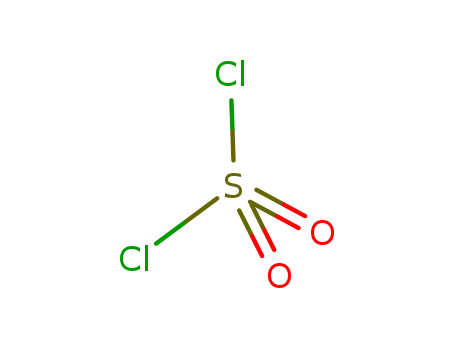10.1016/S0008-6215(00)80792-2
The research aimed to investigate the selective protection of hydroxyl groups in sucrose using tert-butyldiphenylsilyl chloride (t-BDPS) as a reagent. The purpose was to explore the preferential blocking of primary hydroxyl groups in sugar derivatives, recognizing the value of t-BDPS for this purpose due to its stability towards acid and hydrogenolysis compared to related silyl and trityl ethers. The study focused on the synthesis and reactions of 6’-mono-, 6,6’-di-, and 6,1’,6’-tri-t-BDPS ethers of sucrose. The researchers found that the reaction of sucrose with t-BDPS chloride in pyridine, in the presence of 4-dimethylaminopyridine, yielded the crystalline 6’-t-BDPS ether without the need for column chromatography. Further reactions led to the formation of 4,6,1’-trichloride and other derivatives, with the 6,1’,6’-tri-t-BDPS ether being the major product when using 4.6 mol. equiv. of the silylating reagent. The study concluded that the t-BDPS group is an important synthetic intermediate in carbohydrate chemistry due to its stability and the preferential removal of other protecting groups in its presence. Key chemicals used in the process included t-BDPS chloride, pyridine, 4-dimethylaminopyridine, sulphuryl chloride, tetrabutylammonium fluoride, acetic anhydride, and benzoyl chloride.
10.1021/jo00357a027
The research focuses on the preparations and reactions of 10-(halomethy1ene)anthrones, which are derivatives of anthrones with potential synthetic applications. The study aims to explore the reactivity of these compounds with various nucleophiles and the mechanisms involved in their vinylic substitution reactions. The researchers synthesized (halomethy1ene)anthrones 3 and 4 from 10-methylene- and 10-benzylideneanthrones and investigated their reactions with nucleophiles such as azide, cyanide, methoxide, hydroxide, and aniline. The conclusions drawn from the study indicate that these reactions proceed via a nucleophilic addition-elimination route rather than an SN1 mechanism, as the reactions are influenced by the nature of the nucleophile and occur rapidly at ordinary temperatures. The study also found that the presence of a phenyl group on the bromine-bearing carbon in 4b reduces reactivity, suggesting that resonance and inductive electron-withdrawing effects play a role in stabilizing intermediate carbanions. Key chemicals used in the process include 10-methyleneanthrone, 10-benzylideneanthrone, sulfuryl chloride, sodium azide, potassium cyanide, sodium methoxide, sodium hydroxide, and aniline, among others. The research provides valuable insights into the reactivity and synthetic potential of 10-(halomethy1ene)anthrones.
10.1248/bpb.b17-00484
The research focuses on the biological activities of novel derivatives of Differentiation-Inducing Factor 3 (DIF-3) from Dictyostelium discoideum, a potential candidate for new medicine development. The study synthesized two DIF-3 derivatives, DIF-3(+3) and Hex-DIF-3, to investigate their anti-tumor, anti-Trypanosoma cruzi, and immunoregulatory effects. Experiments included in vitro assessments of anti-proliferative effects on tumor cell cultures, anti-T. cruzi activities, and the suppression of interleukin-2 production in Jurkat T cells. Reactants used in the synthesis of these derivatives comprised various organic compounds and reagents, such as aluminum (III) chloride, nonanyl chloride, and sulfuryl chloride, applied in a series of chemical reactions to produce the desired DIF-3 derivatives. Analyses involved spectral data for compound characterization, including 1H-NMR and 13C-NMR spectroscopy, electron ionization mass spectrometry (EI-MS), and high-resolution EI-MS, as well as assessments of hydrophobic index (C log P) and molecular volume (M.V.) to estimate membrane permeability. The experiments utilized several cell lines, including HeLa, LM8, 3T3-L1, and Jurkat cells, for proliferation assays, T. cruzi infection assays, and IL-2 production assays, respectively.
10.1139/V08-183
The research presents a comprehensive study on the syntheses, X-ray structures, and redox behavior of group 14 bis-boraamidinates, specifically focusing on the complexes M[PhB(m-N-t-Bu)2]2 (where M = Ge, Sn) and Li2M[PhB(m-N-t-Bu)2]2 (where M = Sn, Pb). The purpose of the study was to investigate the redox transformations of these complexes and to explore the possibility of accessing cation radicals {M[PhB(m-N-t-Bu)2]2}+ (M = Si, Ge, Sn) through mild oxidation of the corresponding neutral precursors. The researchers used a variety of chemicals in their experiments, including PhBCl2, GeCl4, SnCl4, SnCl2, PbI2, t-BuNH2, SO2Cl2, and LiN(H)-tBu, among others. The conclusions drawn from the research were that the germanium complex was inert towards oxidizing agents, while the tin complex could be oxidized to form a thermally unstable blue radical cation. The study also characterized the structural and fluctional behavior of the synthesized heterotrimetallic complexes, revealing novel polycyclic arrangements and unique bonding modes within these complexes. The findings provide valuable insights into the electronic structures and potential applications of these group 14 complexes, highlighting the differences in their redox properties compared to their isoelectronic group 13 counterparts.
10.1021/co300127z
The research developed a library of eighty-one adenosine antibiotic analogs using parallel solution-phase chemistry. The purpose was to explore the potential biological activities of these nucleoside analogs, which have historically been studied for their anticancer, antifungal, and antiviral properties. The key chemicals used in the synthesis included 5′-amino-5′-deoxy-2′,3′-O-isopropylidene-adenosine as the starting material, along with diverse aldehydes, sulfonyl chloride, and carboxylic acid reactants. The synthesis involved peptide coupling using HATU and DIEA, reductive amination with molecular sieves and sodium borohydride, and reactions with sulfonyl chlorides in DMF. The resulting compounds were tested for antituberculosis and anticancer activity, with only a few showing minor effects. However, the analogs were submitted to the Molecular Libraries Small Molecule Repository for further screening, revealing various interesting activities, such as inhibiting protein interactions and enzyme functions. The conclusion highlighted the successful synthesis of the analog library in good yields and high purity, with potential for future biological applications.



 C
C


